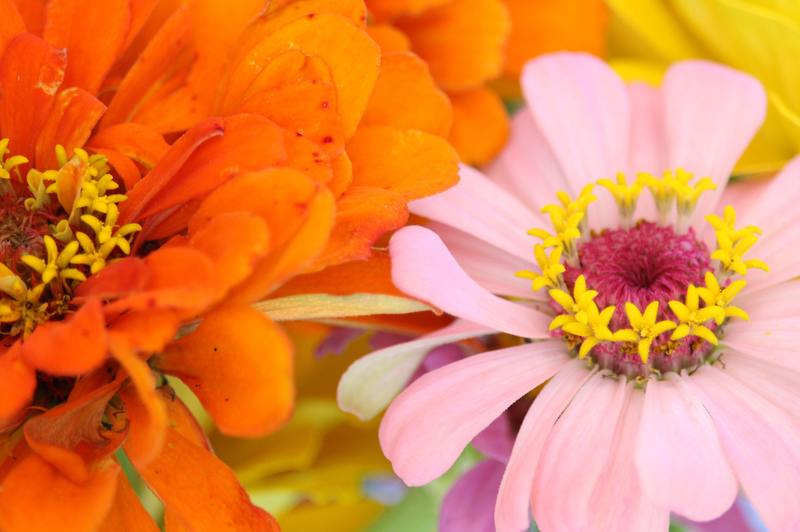Are you a garden owner that struggles with how to treat powdery mildew on zinnias? This post is helpful for you since there are four valuable products to get rid of powdery mildew.
Brace yourself because this post contains different information regarding zinnias plants. It will also answer your question about why mildew develops on the said plant.

Moreover, extra tips will be beneficial to you in preventing further mildew growth in your zinnias plant.
All About Zinnias
Zinnias is a plant native to North America. It is perennial in its native country; however, these plants only grow once a year in areas where it is not its origin.
The stem of the zinnias plants is hairy and stiff. Meanwhile, commonly seen leaves are oval-shaped and are facing each other.
Due to the wide range of colors, this zinnias plant could cause significant changes in the garden. It makes the place more lively and vibrant than usual.
If you want to know more about zinnias, you can freely visit this link about how to plant and grow zinnia flowers.
How Can I Remove Powdery Mildew On Zinnias?
There are four practical, easy-to-get products you can use to treat powdery mildew on zinnias. Use any of these and then follow the given instructions.
1. Baking soda
Usually, baking soda is used as a preventive product rather than a treatment one. Combine this with water and liquid soap to make it effective.
For the measurements, mix one-half teaspoon of liquid soap and one tablespoon of baking soda in a gallon of water. Generously spray the mixture in the powdery mildewed area of zinnias.
2. Milk
Little did you know that milk has various purposes and not just as a beverage. It can also be classified as a fungicide and antiseptic to plants.
Hence, if you spray a solution of three parts of water and one part of milk into a zinnia plant, then you’ll get an instant powdery mildew controller. Milk will increase the immunity of the plant.
3. Mouthwash
Mouthwash is known as a daily germ-killing agent in the mouth. However, this is also useful in eradicating powdery mildew spores in plants.
Mix one part of mouthwash and three parts of water into a spray bottle. Spray it to the infected area, but remember to be cautious of new growth plants since this solution is potent.
4. Organic fungicide treatments
Fungicides are the most known effective product to treat powdery mildew on plants. These fungicides vary depending on the chemical they contain.
Sulfur fungicide
Sulfur fungicide is very effective when applied at the initial stage of planting season. It is also considered a preventive measure for plants to avoid powdery mildew infection.
You need to consider when using this type of fungicide because it should never be applied if you recently used an oil spray. Also, this could ruin the soils’ PH level because of its main ingredient — sulfur.
Copper fungicide
This one is used as a treatment for fungi or mildew and not just for prevention. That being said, you should apply it to the zinnia carefully.
Copper fungicide has high concentrations, which can be harmful to plants. It can burn the leaves of the plant, so make sure to read the dilution instructions and follow as exact as possible.
About prevention
According to the article entitled “how long does it take for mildew to grow,” mildew only needs one day to a couple of days to develop.
While another article that aims to answer the question: how long do powdery mildew spores live, found out that mildew spores can live up to 1-16 days without a host. Eventually, it reproduces in a span of 2-15 days if found a suitable host.
Not to exaggerate things but, all those numbers are not just numbers. Good thing that mildew prevention on plants, specifically on zinnias, is possible.
Powdery Mildew Preventive Measures
Take note of these preventive measures to avoid wasting your precious plant because of powdery mildew.
- Give enough spacing when growing a plant to avoid cross-contamination
- Avoid planting in shady areas
- Properly maintain the plants by removing dead stems and foliage
- Do not put so much fertilizer; instead, use compost
- Apply fungicides as preventive treatments
Conclusion
Zinnia plants are one of a kind because they only bloom annually — owners must exert great care in these plants. Nevertheless, powdery mildew is inevitable.
We hope this post helped you on how to treat powdery mildew on zinnias. You have different options in doing so but, make sure not to over-apply the treatment products to avoid further damage to your plant.
Furthermore, we want to emphasize the relevance of doing the preventive measures listed in the upper part of this post. Those are just simple acts, but they do have huge impacts on the plants.
A well-maintained and eye-pleasing garden is satisfying for homeowners. Likewise, it would be best if you gratified the needs of your zinnias.
